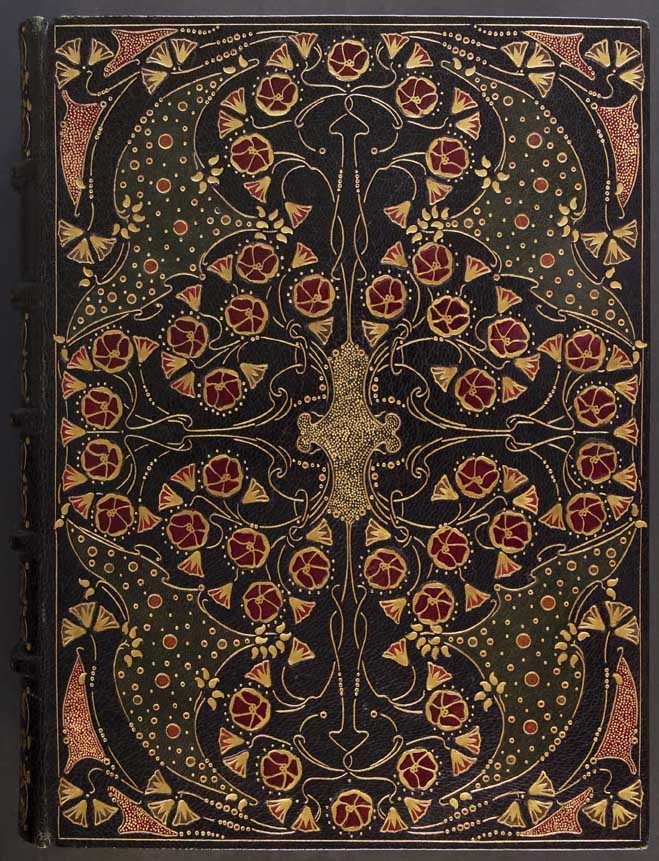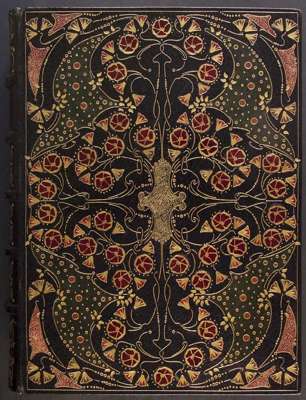
Lot 498

GUILD OF WOMEN BINDERS. A binding attributed to Hélène Cox


Auction: 1 February 2005 at 11:00 GMT
Description
Italy, a poem ... 55 engraved views and scenes, most in two states (proof before lettering) and some in three (on india paper), many after Turner, in an elaborately tooled mosaic binding of green morocco, the covers with a central ornament of pointille tools surrounded by interweaving strands of floral tendrils, the flowers of inlaid red leather, other spaces filled with inlays of abstract shapes, some decorated with pointille and other tools or other inlays, the spine decorated with gilt floral decorations and inlays, inner inlaid doublures of art nouveau decorations in blue and green morocco, vellum free endpapers with small gilt ornaments at the corners, the front free vellum endpaper stamped "Guild of Women Binders", a.e.g., scuff mark on the lower cover (1½" in length), slight offsetting from the doublures to the free vellum endpapers, occasional light spotting (mostly marginal) to the plates, 4to., London: Edward Moxon, 1838
Note: A magnificent example of the work of the Guild of Women Binders, involving some 600 inlays, attributed in a pencilled note at the front to Hélène Cox, one of a group of women in the Guild noted for specialising in gold tooled or inlaid bindings. While this binding shares features common to the bindings emanating from the Guild such as the elaborately inlaid doublures and vellum fly leaves, less characteristic is the spine with raised bands, flat spines being more usual
The Guild was not a guild in the usual sense, but the brainchild of the London bookseller Frank Karslake who had been inspired by a display of bindings by women binders at the Victoria Era Exhibition at Earl's Court in May 1891. He invited those exhibiting to show their bindings at his bookshop. The Guild was founded a few months later. Karslake in fact knew little about the binding business and basically tried to use women as cheap labour to provide saleable fine bindings. The Guild was finally declared bankrupt in in 1904, with a final sale of some 336 bindings being sold at Sothebys on the 7 & 8th of November. The bindery was, nevertheless, the source and inspiration of some remarkably fine work during the Arts and Craft period and drew support from some distinguished women binders such as the Edinburgh binder Annie MacDonald who numbered Phoebe Traquair among her own group. Some have even seen the work of the bindery "as doing for the craft what the Kelmscott Press accomplished for modern printing " (Anstruther). See: Tidcombe Women bookbinders 1880-1920, 1996, pp. 115 ff.; Anstruther Guild of Women Binders: the bindings of to-morrow, 1902

